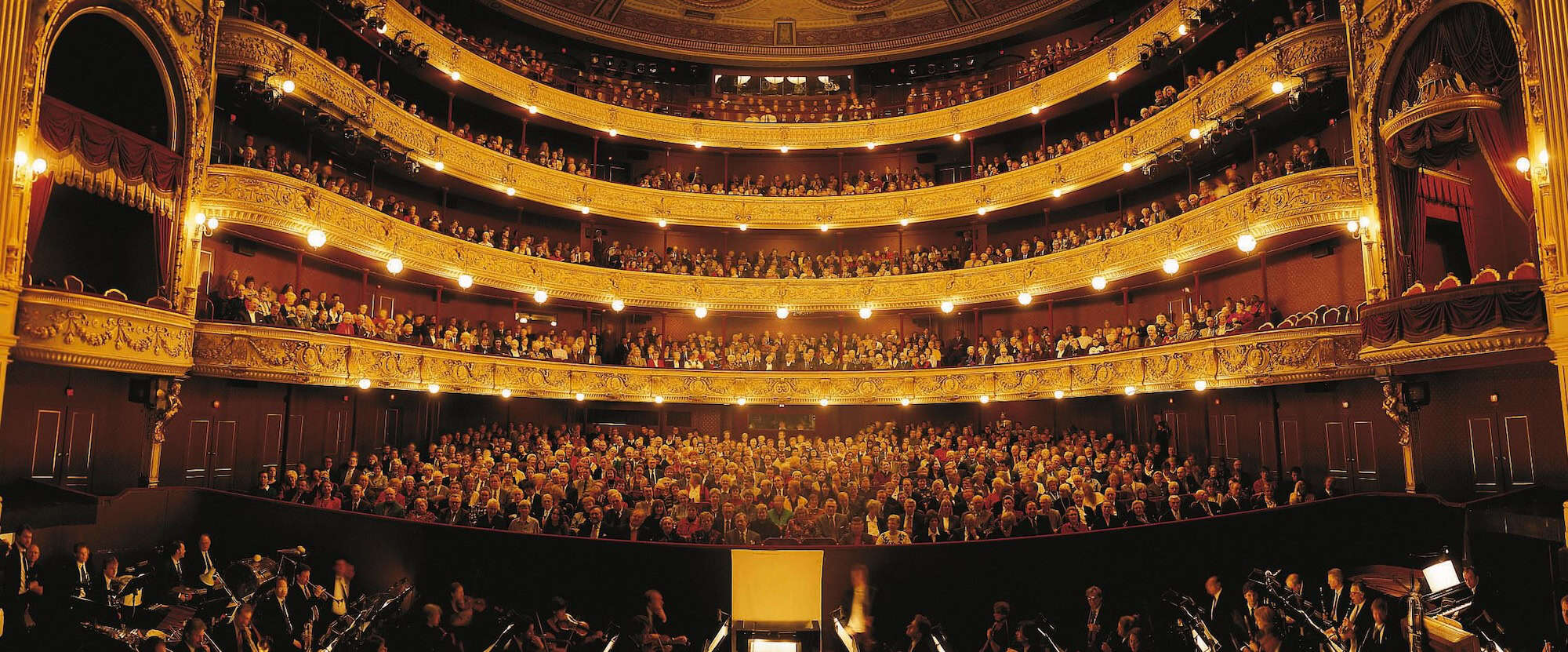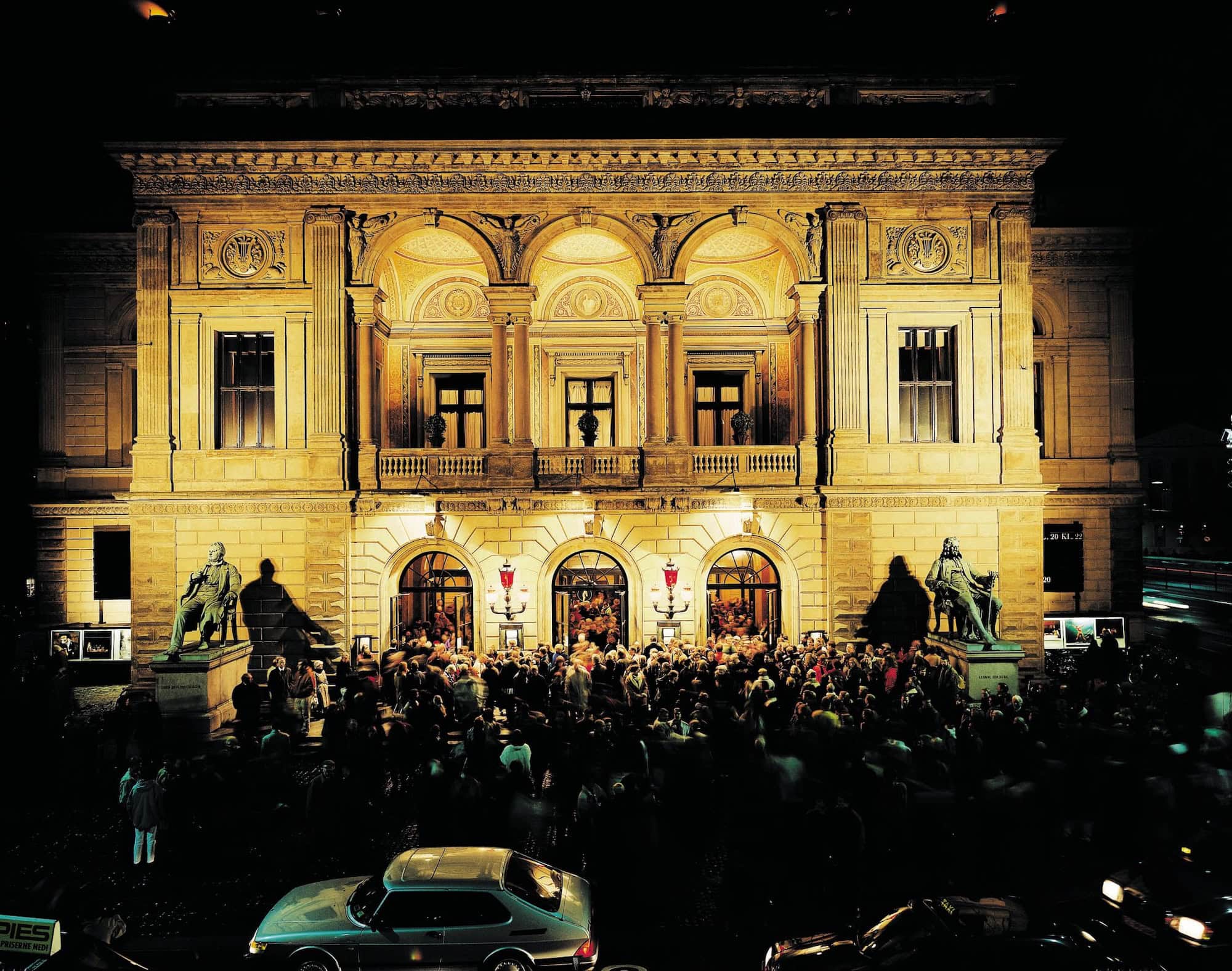The velvet curtain rises, the orchestra swells, and suddenly you’re transported into a world where artistry meets tradition in the most spectacular way. At the Royal Danish Theatre, Denmark’s crown jewel of performing arts, every evening promises an encounter with excellence that has been refined over more than two centuries. Whether you’re witnessing a world-class ballet performance, being moved by a powerful opera, or captivated by cutting-edge contemporary drama, this isn’t just entertainment—it’s a glimpse into the soul of Danish culture itself.
As Denmark’s national stage, the Royal Danish Theatre stands as one of Europe’s oldest and most prestigious cultural institutions, where legendary performers have graced the boards and where tomorrow’s stars are born. For visitors to Copenhagen, an evening here offers something no guidebook can fully capture: the chance to experience Danish artistic heritage in its most refined form.
What Makes It Special
The Royal Danish Theatre isn’t just one venue—it’s a cultural empire spanning multiple stunning locations across Copenhagen. The crown jewel is the Old Stage (Gamle Scene) on Kongens Nytorv, a neoclassical masterpiece from 1874 that embodies theatrical grandeur with its ornate interior, crystal chandeliers, and royal boxes that have hosted Danish royalty for generations. The building itself is a work of art, with its elegant facade serving as a backdrop for countless romantic proposals and tourist photos.
But the theatre’s true magic lies in its artistic legacy. This is home to the Royal Danish Ballet, one of the world’s oldest ballet companies, founded in 1748 and famous for preserving the romantic ballet tradition of August Bournonville. The Royal Danish Opera has premiered works by Carl Nielsen and other Danish composers, while the drama company has been a launching pad for actors who’ve gone on to international acclaim.
The theatre’s commitment to both preserving classical traditions and embracing contemporary innovation sets it apart. On any given week, you might catch a 19th-century Bournonville ballet, a modern interpretation of Hamlet, or a world premiere opera. This isn’t a museum—it’s a living, breathing institution that continues to shape Danish cultural identity.

The Experience
Stepping into the Royal Danish Theatre is like entering a different era. The Old Stage’s interior takes your breath away, with its deep red velvet seats, gilded details, and that magical moment when the house lights dim and anticipation fills the air. The acoustics are superb—whether you’re in the front row or the upper galleries, you’ll catch every whispered line and soaring note.
The audience itself becomes part of the spectacle. You’ll find elegantly dressed locals treating this as their regular cultural outing, international visitors in their finest attire, and passionate young theatre enthusiasts. There’s a palpable sense of occasion, especially for premieres and gala performances, where you might spot Danish celebrities or even members of the royal family.
The theatre operates across several venues, each with its own personality. The historic Old Stage primarily hosts drama and special performances, while the Opera House on Holmen (opened in 2005) serves as the spectacular home for opera and ballet. The Playhouse (Skuespilhuset) on the harbor focuses on contemporary drama. Each venue offers a distinctly different atmosphere, from the intimate grandeur of the Old Stage to the modern architectural marvel of the Opera House.
Intermissions are social events in themselves, with champagne and conversation flowing in the elegant foyers. Don’t rush back to your seat—people-watching is almost as entertaining as the performance.
Practical Information
The Royal Danish Theatre operates from multiple locations:
- Old Stage (Gamle Scene): Kongens Nytorv 9, 1017 Copenhagen K
- Opera House: Ekvipagemestervej 10, 1438 Copenhagen K
- Playhouse: Sankt Annæ Plads 36, 1250 Copenhagen K
All venues are easily accessible by metro, bus, or taxi. The Old Stage sits right on Kongens Nytorv metro station, while the Opera House and Playhouse connect to central Copenhagen via public transport.
The season typically runs from August to June, with summer months offering special performances and festivals. Evening shows usually begin at 7:30 PM, with weekend matinees available for some productions.
Ticket prices vary significantly depending on the venue, performance type, and seating. Expect to pay approximately 200-1,500 DKK for most performances, with premium seats for popular operas and ballets potentially reaching higher prices. Student and senior discounts are often available.
**Book well in advance** for popular performances, especially premieres and works featuring international guest artists. The official website offers the most comprehensive booking system, though tickets are also available at the box office.
Dress code leans toward smart casual to formal, especially for evening performances at the Old Stage and Opera House. While casual attire won’t get you turned away, you’ll feel more comfortable dressed up—Copenhageners use this as an occasion to put on their finest.

Insider Tips
Rush tickets sometimes become available on performance day for sold-out shows. Arrive when the box office opens for your best shot.
First-time visitors should consider starting with a ballet performance—the Royal Danish Ballet’s Bournonville repertoire is truly world-class and represents something you can’t experience anywhere else with the same authenticity.
Budget-conscious theatergoers should look for special discount performances and dress rehearsals, which sometimes open to the public at significantly reduced prices.
The Opera House offers guided tours with fascinating behind-the-scenes access—perfect for theatre lovers who want to understand the technical magic behind these productions.
For the ultimate experience, book pre-theater dinner at one of the nearby restaurants in the historic district. The area around Kongens Nytorv offers several excellent options within walking distance.
Similar Alternatives
If the Royal Danish Theatre is sold out or beyond your budget, consider Folketeatret, Copenhagen’s “people’s theater,” which offers excellent drama in a more intimate setting with generally lower ticket prices. For contemporary performance art, Dansehallerne presents innovative dance and physical theater in a former industrial space.
**Copenhagen Opera Festival** (typically held in August) provides outdoor performances and more accessible programming, while **Tivoli Concert Hall** offers classical music in a magical setting, especially during the winter season.
A Cultural Experience Like No Other
The Royal Danish Theatre represents more than entertainment—it’s a window into Danish cultural DNA, where artistic excellence meets royal tradition in spaces that have witnessed centuries of theatrical history. Whether you’re moved to tears by a powerful drama, swept away by the elegance of a Bournonville ballet, or thrilled by a soaring operatic performance, an evening here creates memories that last long after the final curtain call.
This is essential Copenhagen culture at its finest, perfect for anyone seeking to understand what makes this city’s artistic soul so compelling. Book ahead, dress up, and prepare for an evening that will remind you why live theater remains one of humanity’s most powerful art forms.
*Please verify current performance schedules, prices, and booking information on the Royal Danish Theatre’s official website before visiting, as programming and policies can change seasonally.*
